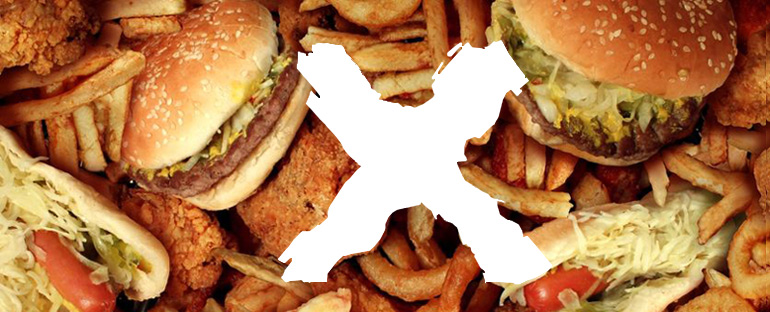
Trans fats and health: the new WHO plan to eliminate

World Health Organization calls for a ban on trans fats by 2023
Non-communicable diseases represent the greatest health risk and the leading cause of death worldwide. Of these, cardiovascular diseases account for the largest share of this worrying situation (1).
Prevention is the “key weapon” in reducing the main risk factors for the spread of these diseases, including: tobacco consumption, physical inactivity, harmful alcohol consumption and poor eating habits.
Since scientific consensus has been reached on the fact that the consumption of trans fats is related to cardiovascular risk, the World Health Organization (WHO) proposed in 2018 a global ban on these compounds by 2023 (2). According to WHO estimates, this intervention could save about 10 million lives.
Some states such as Denmark, Switzerland, Canada and California or municipalities such as New York have already banned the use of these dietary fats, and other countries such as Thailand are planning to follow these guidelines. Unfortunately, many countries, both in the West and in Asia and Africa, are delaying the implementation of this important preventive action. In this scenario, still far from safeguarding public health, the WHO’s call to governments seems appropriate: the preparation of a real action program called REPLACE.
What are trans fats?
This category of fats takes its name from the arrangement of carbon atoms around a double chemical bond and differs from the bond normally present at conformation called cis. Most trans fats are artificially created to make vegetable oils more solid, workable and durable, as in the case of margarines. The chemical process involves the addition of hydrogen atoms and therefore the presence of trans with the ingredient “partially hydrogenated fats” can be recognized.
Trans are also formed during the deodorisation of polyunsaturated fats, e.g. in fish oil and supplements, or during cooking/fractures that subject oils to high temperatures (> 220°C).
Why are trans fats used in food?
Trans are inexpensive and make the products easy to process, palatable and extend their shelf life. They are also used for frying because they can be recycled for a long time. In India, for example, a frying oil called vanaspati, made from palm oil, is very common in restaurants or street foods. This fat is reused over and over again by accumulating large amounts of trans.
There are no sustainable reasons not to replace these fats with other types of healthy oils.
How do trans fats harm health?
These fats increase the risk of heart disease and stroke and are also associated with an increased risk of developing type 2 diabetes.
The action of these compounds is expressed through the raising of bad cholesterol (LDL) and the reduction of good cholesterol (HDL). There is also research linking trans-fats to infertility and systemic inflammation.
Where are the trans fats?
Trans fats can be present in many packaged foods, whether they contain them as an ingredient or are formed during the thermal processes to which are subjected. In the first case, products such as frozen pizza, snacks, crackers, biscuits, etc. In the second case, chips, fries, tempura, and most of the street food.
It should be noted that the current EU Labelling Regulation does not impose to declare the trans-fat content of foods. For this reason, we will not find this important indication on food packaging, making the consumer unaware of the content of trans fats in a product.
Do trans natural fats exist?
Trans fats can also form in the gastrointestinal system of herbivorous animals, through metabolic processes carried out by commensal bacteria, and from there enter a small part of the food chain through milk and its derivatives or meat. Note that hydrogenation in natural trans fats occurs in a different double-bonded position than in artificially produced fats. There is currently no evidence that naturally produced trans fats have a negative effect on heart health.
How many trans fats can be eaten?
The current reference intake levels for the Italian population (LARN), as well as the latest U.S. guidelines (USDA), indicate to consume as little as possible. In other European Union countries, the permitted trans values range from < 2% of the daily calories in France and the United Kingdom to < 1% of almost all other countries.
How to reduce the consumption of these compounds?
- Through the adoption of the Mediterranean diet that contains few processed foods, as indicated by the balanced dish and the indications of Harvard Medical School.
- Follow a diet rich in vegetables, fruits, whole grains, seeds and dried fruits, fish products.
- Restrict red meat and sugary foods.
- Buy oils obtained by mechanical processes (cold) and prefer extra virgin olive oil. Exclude margarines from your pantry.
- Avoid junk food and frying.
- Limit bakery products because they can contain varying amounts of trans fats, depending on the fats used in production and the temperatures to which have been subjected.
- Preference should be given to packaged products with a label bearing the words ‘low in saturated fat’. This claim is one of the voluntary nutritional claims and is therefore not widespread.
- Pay attention to the presence on the label of any partially hydrogenated fats and prefer products that use olive oil as an ingredient.
Bibliography
(1) Noncommunicable diseases (WHO): https://www.who.int/news-room/fact-sheets/detail/noncommunicable-diseases
(2) WHO plan to eliminate industrially-produced trans-fatty acids from global food supply. 14 May 2018 News Release. http://www.who.int/news-room/detail/14-05-2018-who-plan-to-eliminate-industrially-produced-trans-fatty-acids-from-global-food-supply
Article by:
Dr. Francesco Bonucci – Nutritionist
The diet advise, written in the article, are not intended to be a substitute for a personal nutrition plan and should be adapted to specific cases.
Photo: 123RF Archivio Fotografico | @lightwise, 19703988, 2019-07-02 | @olegdudko, 48236855, 2019-07-02
- On 8 February 2019





